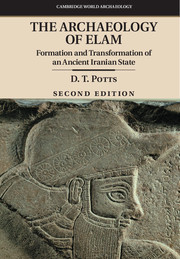Book contents
- Frontmatter
- Dedication
- Contents
- List of illustrations
- List of tables
- Preface to the second edition
- Preface and acknowledgements
- Acknowledgements for photographic reproduction
- List of abbreviations
- Note on transliteration and dating systems
- 1 Elam: what, when, where?
- 2 Environment, climate and resources
- 3 The immediate precursors of Elam
- 4 Elam and Awan
- 5 The dynasty of Shimashki
- 6 The grand regents of Elam and Susa
- 7 The kingdom of Susa and Anshan
- 8 The Neo-Elamite period
- 9 Elam in the Achaemenid empire
- 10 Elymais
- 11 Elam under the Sasanians and beyond
- 12 Conclusion
- References
- Index
Preface and acknowledgements
Published online by Cambridge University Press: 18 December 2015
- Frontmatter
- Dedication
- Contents
- List of illustrations
- List of tables
- Preface to the second edition
- Preface and acknowledgements
- Acknowledgements for photographic reproduction
- List of abbreviations
- Note on transliteration and dating systems
- 1 Elam: what, when, where?
- 2 Environment, climate and resources
- 3 The immediate precursors of Elam
- 4 Elam and Awan
- 5 The dynasty of Shimashki
- 6 The grand regents of Elam and Susa
- 7 The kingdom of Susa and Anshan
- 8 The Neo-Elamite period
- 9 Elam in the Achaemenid empire
- 10 Elymais
- 11 Elam under the Sasanians and beyond
- 12 Conclusion
- References
- Index
Summary
Of all the major constituents of the ancient Near East, Elam has surely proven one of the more difficult to come to grips with. For most students of antiquity Elam appears aloof, somewhat exotic – a place of hard-to-pronounce names, unfamiliar sites, a poorly understood language and a somewhat barbaric population to the east of Mesopotamia. Alternately subject to Mesopotamian domination or busily subverting it as best they could, the Elamites are present in the archaeological and written record for thousands of years, reacting to foreign aggression, forging local alliances of which we have few details, cropping up in the written record of their western neighbours, saying little of themselves in their own inscriptions. Archaeologists and historians have consciously or unconsciously regarded the brutal Assyrian campaigns against the Elamites in the seventh century BC as the final chapter in their troubled history, the rise of the Achaemenid Persians as a new dawn in Iranian antiquity which heralded the start of another era. Yet the Elamites and their language crop up in post-Elamite, ‘Persian’ Iran. Elamites appear in the histories of Alexander the Great and his Seleucid successors. In the guise of Elymaeans they fought for independence against the later Arsacid dynasty. And in the early Medieval era ‘Elam’ became the name of an ecclesiastical province of one of the most important branches of eastern Christianity, the Nestorian church. Anyone interested in the creation of identity and ethnicity, in the past or the present, will find in the story of Elam a palimpsest of ever-changing definitions of what it meant to be Elamite, glimpses of which are revealed in a patchwork of archaeological and epigraphic evidence as difficult to comprehend as any in the ancient Near East.
Numerous distinguished historians, sociologists, social theorists and anthropologists have explored the invention of national and ethnic consciousness and identity (e.g. Nash 1989; Hobsbawm and Ranger 1983; Hobsbawm 1990; Fullbrook 1993; Teich and Porter 1993; Gillis 1994; Pickett 1996; Ross 1996; Bischof and Pelinka 1997), leaving us in no doubt that these are socially constructed and highly mutable. By the time the reader has reached the end of this book I would hope that not merely the artificiality of the construct ‘Elam’, but the notion that many Elams were constructed over time, no two of which were probably coterminous culturally, politically or geographically with each other, will have become clear.
- Type
- Chapter
- Information
- The Archaeology of ElamFormation and Transformation of an Ancient Iranian State, pp. xxi - xxviPublisher: Cambridge University PressPrint publication year: 2015



